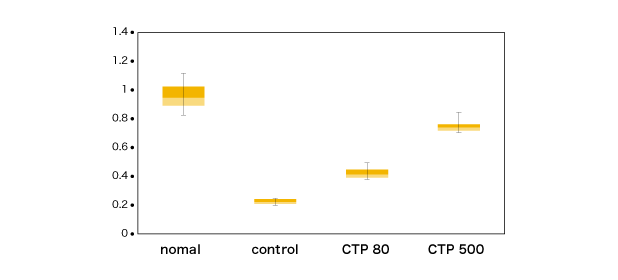
Inhibition of dryness and itching of skin (in vivo)
We studied what effect an oral ingestion of CTP-containing collagen gives against itching of dry skin.
Test for improvement effect on a dry skin model (in mouse)
1) Methods
- <Inducement of dry skin>
- ICR mice (5 weeks of age) were divided into 4 groups. In 3 groups, hairs on their backs were shaved on the first test day. From the next day, pieces of cottons soaked in acetone were affixed to those shaved areas for 5 minutes a day on 3 successive days.
- <Administration of CTP-containing collagen>
- The above 3 groups were administered CTP-containing collagen dissolved in normal saline of 0 mg/kg, 80 mg/kg and 500 mg/kg once a day for 3 successive days from the first test day: those groups were named "Vehicle + Acetone", "CTP80 + Acetone" and "CTP500 + Acetone" , respectively. Another group which received no treatment was used as a negative control.
- <Evaluation>
- The 3 groups which had received acetone treatment as mentioned above were monitored by a video recorder for 30 minutes starting from 1 hour after the treatment, and the numbers of scratching skin eruption on their backs were counted, and also the transepidermal water loss (TEWL) was measured after 2 hours of the treatment by using a Tewameter®. In addition, we compared quantities of intraepidermal nerve fiber, nerve growth factor (NGF), and Semaphorin 3A in skin samples collected from each group on the 4th day from the first test day.
2) Results and Discussion

We observed a remarkable increase in TEWL in the 3 groups that received acetone treatment in comparison with the "no treatment" group. However, TEWL decreased in the "CTP80/500 + acetone" groups depending on dose of CTP (Figure 1). Besides, the numbers of scratching behavior of the mice confirmed by the monitor image were significantly reduced in the "CTP80/500 + acetone" groups in comparison with the "vehicle + acetone" group.
In addition, intraepidermal nerve fiber was significantly decreased in the "CTP80/500 + acetone" groups depending on dose of CTP, in comparison with the "vehicle + acetone" group (Figure 3). The expression of NGF, which causes perception of itching, was also decreased in the "CTP80/500 + acetone" groups depending on dose of CTP in comparison with the �vehicle + acetone� group (Figure 4).
On the other hand, Semaphorin 3A, nerve repulsion factor which inhibits perception of itching, was decreased in the 3 groups treated with acetone and it led to low threshold levels of itching in those groups. However, in the "CTP80/500 + acetone" groups, the expressions of Semaphorin 3A were seen to be getting closer to normal level depending on dose of CTP (Figure 5).
According to above results, we found that the oral ingestion of CTP-containing collagen can inhibit dryness of skin and consequent itching.
Figure 1: Time course of TEWL
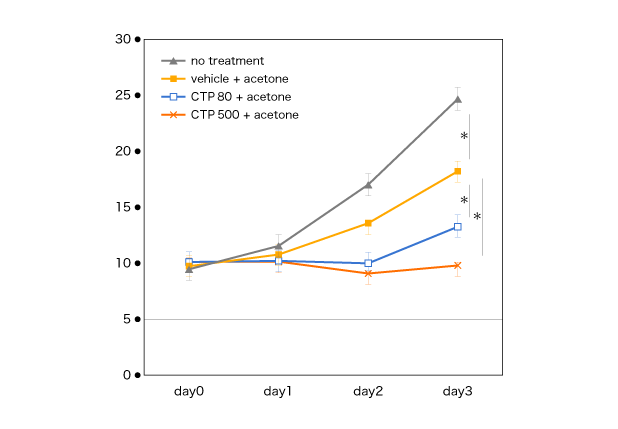
Figure 2: Scratching behavior
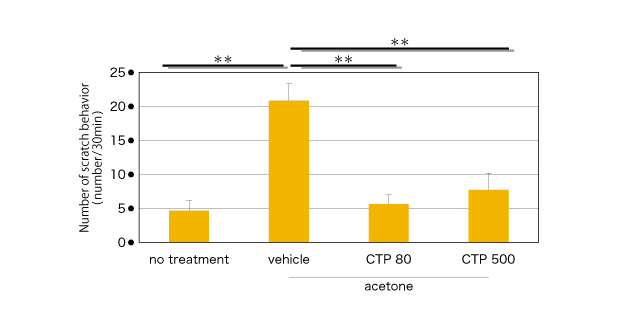
Figure 3: Intraepidermal nerve fiber
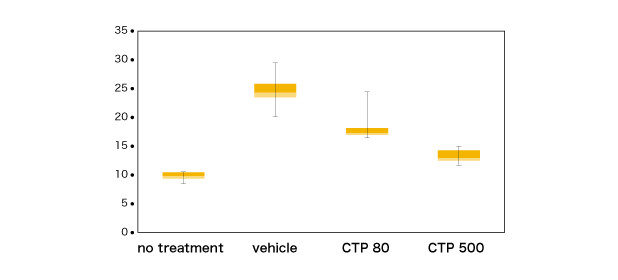
Figure 4: Expression level of NGF in skin tissues (Day4)
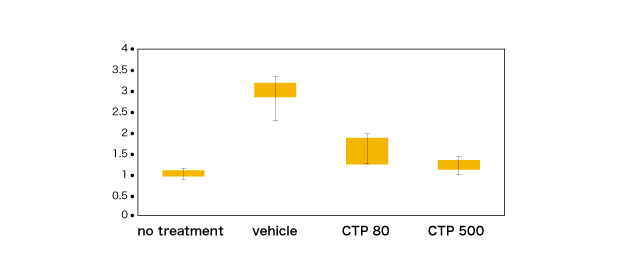
Figure 5: Expression level of Semaphorin3A in skin tissues (Day4)
